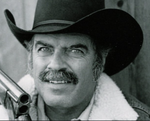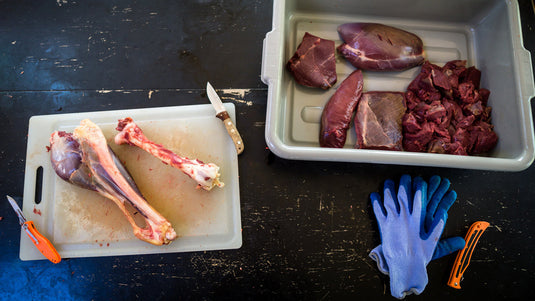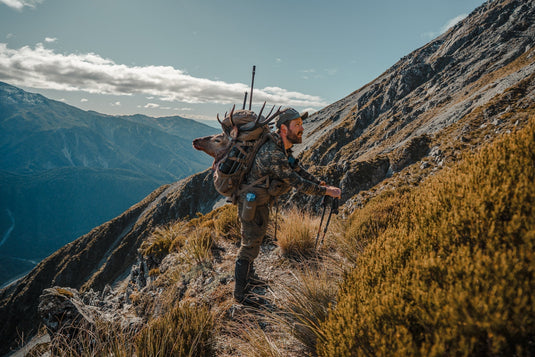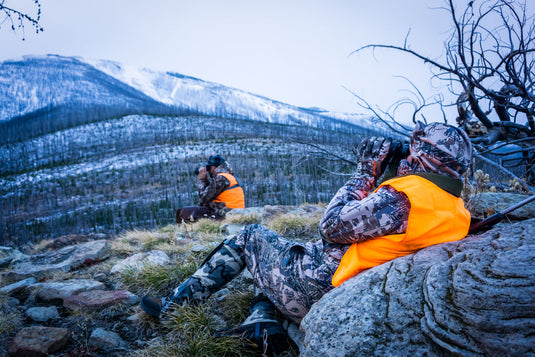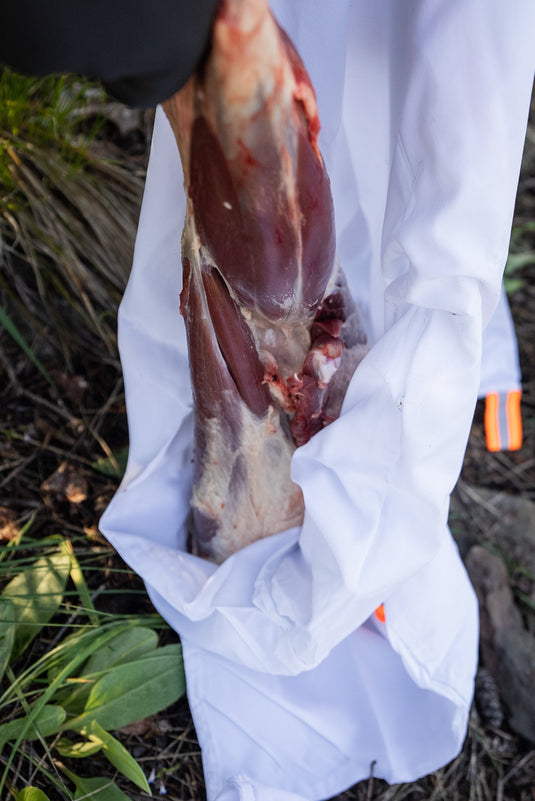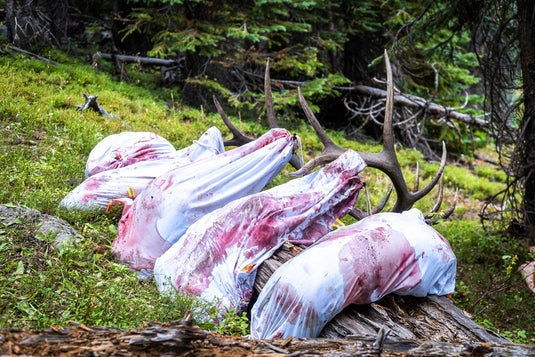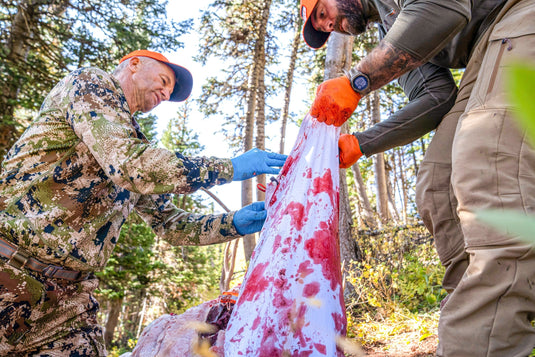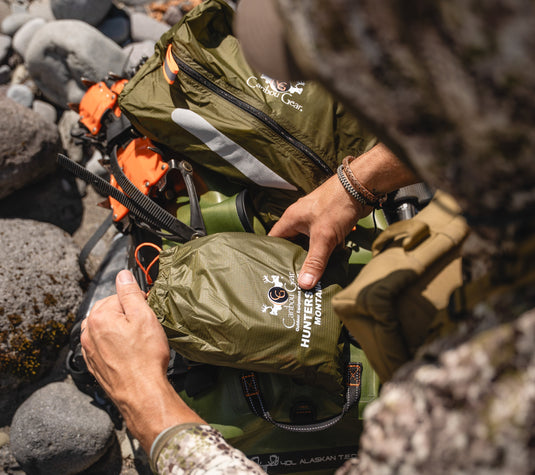When you think about spring hunting in the U.S., most hunters think about turkeys. Some states allow black bear hunting in the spring as well, chiefly in May and June. They can be hunted in several Rocky Mountain states as well as Alaska and all the four western Canada Provinces. Unfortunately, in 1992 Colorado terminated spring bear hunting as well as baiting and hunting with hounds any time of the year. Interestingly, my very first black bear was taken in Colorado in the early ‘80’s. Several western states other than Colorado also don’t allow baiting in the spring. This article is about hunting bears by spotting and stalking. Next week my blog will be about baiting.
Due to the furtive nature of bears and the fact that they’re largely nocturnal, it’s not easy to see them in the woods. In the spring, however, they emerge from their dens with empty bellies and set about to stuff themselves with whatever is edible. That being the case they’re far more active in the daylight hours which works to the advantage of hunters. Having said that, bears are tough to see in timbered areas and places with heavy underbrush. An effective strategy is to watch meadows, old burns and logged areas where there’s decent visibility.
Bears may leave their winter dens on snowy slopes and feed down the mountain by following the snow line where they’ll forage on the first green grass and shrubs that appear in the thawing ground. Hunt strategies vary with the terrain, vegetation, and access. In some places you can drive roads and hunt from a pickup or four-wheeler, looking for bears as you go. While that might seem to be a lazy, unethical way to hunt, I like to make this comment: “You can see Venus from the pickup, too — it’s getting there that’s the problem.” And you can also see a great deal of country by doing so.
I can’t remember all the times I’ve spotted decent bears from the road, but was stymied because there was a canyon too steep to cross between us, or a river too deep to wade, or too far to hike with limited shooting light, knowing there wasn’t enough time to stalk close enough for a shot.

Because bears are solitary in nature, except for sows with cubs, you might be hard pressed to see a bear unless it’s in fairly open terrain. That’s far different than hunting mule deer or elk where you’re apt to see a herd of animals, with only one or two visible and the rest obscured by vegetation.
Binoculars are mandatory when you hunt bears, and a spotting scope is a good idea if you want to look more closely to size it up or to determine its color. If you’re being really selective and want a particular color-phase bear, a close look may help distinguish between a cinnamon or brown- colored bear, for example. In the event you’re hunting in country where grizzlies share the landscape with black bears, you’ll absolutely want to make the correct identification. Shooting a grizzly by mistake may land you a huge fine and even a stint in jail.
Some areas offer far better chances of success than others. In my experiences I’ve found the best hunting in northern Idaho, northwest Montana and British Columbia in Canada where I’ve made the majority of my bear hunts. In some Idaho units there’s a two- bear limit, not just because of the numbers of bears, but because black bears are known to be serious predators of elk calves in parts of that state.
I’ve hunted by both hiking and driving roads. I’d look for bears as well as places that looked appealing such as lush green meadows, the farther from roads the better. I recall one hunt in Idaho where I hiked a mile to check out a meadow because I had a hunch it might have been attractive to bears. Luck was in my favor when I saw numerous piles of fresh bear droppings in one corner of the field. I found a spot where I could sit with the wind in my favor, assuming the bear would bed in a dense timbered area close to the meadow. I hadn’t waited two hours before a bear emerged from the woods and entered the field. When I made the 150 yard shot with my 30-06 the bear went down. In this case, scouting enabled me to locate fresh bear sign. They’ll typically return to the place where they’ve found good forage.
As I mentioned, bears that are freshly out of their winter dens will be famished and will feed on and off during the daytime, but veteran hunters know that the very last two hours of light are the very best. That’s the time when practically every bear is on its feet feeding.
On a Montana hunt I parked my pickup next to a locked gate that closed the road on the national forest. I hiked up the road and saw an area of lush grass near a closed campground that had been fed upon by a bear, as determined by one fresh pile of scat. I hiked up the road and had gone about a half mile when I saw a bear walking down the road. When it stopped to eat some dandelion flowers I shot it. The bear was an old dry sow, and I was surprised to see a tag in each ear. When I reported the bear to the Montana Department of Fish, Wildlife and Parks they checked their records and told me the bear had been trapped in a nearby campground 6 times and released many miles away. Evidently not far enough, since she kept returning. Biologists were happy I resolved that problem.
All of the hunts I’ve mentioned were DIY, and all on public land, chiefly national forests. Most of the western states have millions of acres in national forests as well as lands administered by the Bureau of Land Management. There’s no lack of access if you want to hunt a bear, and resident and nonresident tags are available over the counter.
There are also private lands where you can hunt bears, often free without having to pay a trespass fee or lease hunting rights. Some landowners allow spring bear hunting because the bruins are primary predators on big game fawns and calves as well as livestock. Permission to hunt bears in the fall might not be so easy to obtain because those ranches are typically leased to hunters or outfitters.
Some of my best spot and stalk bear hunts in the spring have been in British Columbia where baiting is illegal. Canada doesn’t allow nonresidents to hunt big game without a guide, so you must hire an outfitter. BC is a huge province loaded with black bears (and grizzlies as well, but grizzlies can no longer be hunted there.) Some of the best spots are areas that have been logged. After the forest has been cut, new forbs, grass and shrubs rapidly grow where the sun now reaches the ground. Bears are attracted to these hotspots and are often fairly visible where the new evergreen saplings haven’t yet grown back in. Before the logging roads are abandoned they’re planted to clover, attracting bears from miles around.

I’ve made many BC hunts with legendary Jim Shockey who is a close friend. On one particular hunt Jim and I saw more than 20 different bears. We looked each one over closely with binocs and he finally told me to lower the boom on one of the last bears we’d seen that day. There was a point where we looked at so many bears that I was second guessing myself, but Jim was a veteran hunter who could accurately estimate a bear’s size. My bear was a dandy, almost a 7 footer.
Another BC black bear hunt was unique in that our “camp” was a 65 foot boat. We’d glass the remote ocean shoreline from the boat for bears that fed on tidal grass at low tide. If we saw a big bear we quietly headed to shore in a 17 foot skiff where we’d figure out the bear’s travel along the beach and set up an ambush. Once we saw five different bears from the big boat. During high tide the bears disappeared and bedded in the timber next to the shore because the tidal grass was underwater and their forage was temporarily unavailable. We’d take advantage of the lull by tossing out Dungeness crab and prawn traps and fish for salmon and halibut. Most of the bears were huge, typically better than 7 feet, and most had never seen a human. These were some of my favorite hunts because there was always something to do in a truly beautiful region of North America.
Spring hunting for black bears can be tailored for your own physical and financial abilities. As I indicated, DIY hunts are possible everywhere in the west. On the plus side, bear hides are luxurious when they emerge from their dens, though they become “rubbed” with bare or thin spots toward the end of the season. And though spring bears aren’t as fat as bears taken in the fall, their meat is still excellent as table fare.
Finally, being able to hunt bears in the spring allows you to enjoy big game hunting at a time of the year when no other seasons are going on and fall is many months away. That’s a good reason to get out there and match wits with a worthy quarry.


